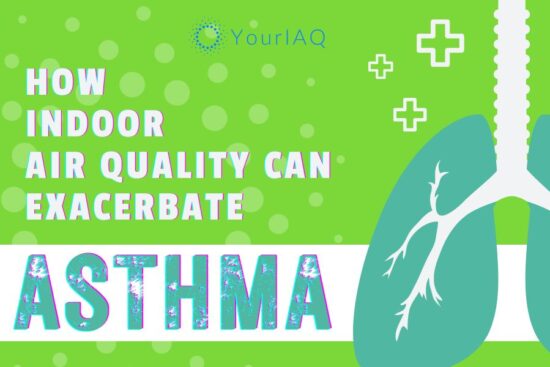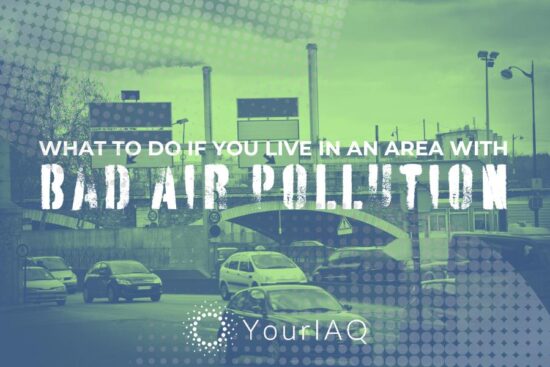
Good indoor air quality is essential for a healthy living environment, but it can be compromised by various factors, one of which is mold. Mold, a common issue in many homes, can significantly impact the air we breathe. You might wonder, “how much mold exposure is harmful? In this article, we’ll explore the effects of mold on indoor air quality and provide insights into how to manage it.
Understanding Mold and Its Impact on Air Quality
Mold is a type of fungus that thrives in moist environments. It reproduces through tiny spores and mycotoxins that travel through the air, making it a concern for indoor air quality. High levels of mold spores in the air can exacerbate allergies and respiratory conditions, making it essential to address mold issues promptly. Factors contributing to mold growth include high humidity, leaks, and poor ventilation.
See also: Best and Worst U.S. States for Mold
Common Types of Mold in Homes
Mold is more than just an unsightly nuisance; it’s a living organism that thrives in damp environments. Common types of mold found in homes, like Aspergillus, Penicillium, Cladosporium, and Stachybotrys (often called black mold), can pose various health risks, particularly to those with allergies or compromised immune systems.
These types of mold grow where moisture lingers – think bathrooms, kitchens, and basements. Understanding the conditions that favor mold growth is key to controlling it.
Signs of Mold in Your Indoor Environment
Mold is not always easily visible. You can sometimes detect it through a musty odor or physical symptoms like allergies. Visual signs include discolored walls or ceilings and visible growth around damp areas or window sills. If you suspect mold in your home, it’s crucial to investigate further and, if it’s found, act promptly.
Health Impacts of Mold Exposure
Mold’s impact on health can range from mild to severe. For many, it triggers allergies and respiratory issues like coughing or wheezing. Vulnerable groups, such as the elderly, children, and those with weakened immune systems or pre-existing health conditions, are at a higher risk. Symptoms can range from mild allergic reactions to more severe health issues in prolonged exposure cases. It’s crucial to recognize these health implications to take mold exposure seriously.
Effects of Mold on Indoor Air Quality
Mold can significantly degrade the air quality in your home or workplace, leading to an unhealthy environment. It releases spores and toxins that can be harmful when inhaled, especially over extended periods. Some studies show a link between long-term mold exposure and dementia or other neurological issues.
Preventive Measures to Maintain Good Indoor Air Quality
To prevent mold growth, it’s essential to control humidity levels, ensure adequate ventilation, and promptly address any water leaks or dampness. Regular HVAC maintenance is also crucial in preventing mold proliferation. Remember, prevention is always more affordable than remediation.
Read more: Reducing Humidity in Your Home: Practical Tips for a Healthier Environment
Detecting and Removing Mold from Indoor Spaces
There are three primary ways to detect mold:
- Using your own senses (seeing, smelling or touching it).
- Professional assessment. In severe cases, professional help is necessary to safely and effectively remove mold and prevent its return.
- Air quality monitoring. Air quality monitors can identify the potential for mold growth based on measuring the size and volume of air particles as well as humidity levels.
To learn more, here is a comprehensive guide on how to detect mold growth and act to remove it from your home: How to Detect Mold in the Air.
Improving Indoor Air Quality in the Presence of Mold
Air purifiers and proper ventilation can help reduce mold spores in the air. Controlling moisture through dehumidifiers and fixing leaks are also effective in preventing mold growth. When mold takes over in a big way, it’s time to call in the professionals. Keep in mind effective remediation involves not just removing mold but also fixing the underlying moisture problem to ensure the mold doesn’t return. This can come with a hefty price tag.
FAQs on Mold Exposure
Can mold affect the air quality in my home?
Yes, mold releases spores and toxins that can deteriorate indoor air quality.
Is a small amount of mold in my home a concern?
Even small amounts can be problematic if they’re in a high-humidity area, as mold can grow rapidly.
How can mold exposure impact my health?
Mold exposure can cause allergies, respiratory issues, and other health problems, especially in vulnerable individuals. Some research suggest long-term exposure can have more serious health consequences.
What are some common signs of mold growth in indoor spaces?
Common signs include musty odors, visible mold growth, and allergic symptoms.
How can I imptove indoor air quality if I have mold in my home?
Use air purifiers, ensure proper ventilation, control humidity, and seek professional help for mold remediation. Consider using an air quality monitor to provide ongoing detection.
Can I remove mold myself?
For small areas, yes. But for larger infestations, we recommend professional help.
How often should I check my home for mold?
Regularly, especially after heavy rains or in high-humidity seasons. An air quality monitor can provide continuous monitoring for changes in your air quality, which indicates the presence of mold or other pollutants.
Are home air purifiers effective against mold?
They can help, but they’re not a standalone solution. Addressing the moisture source is key.






